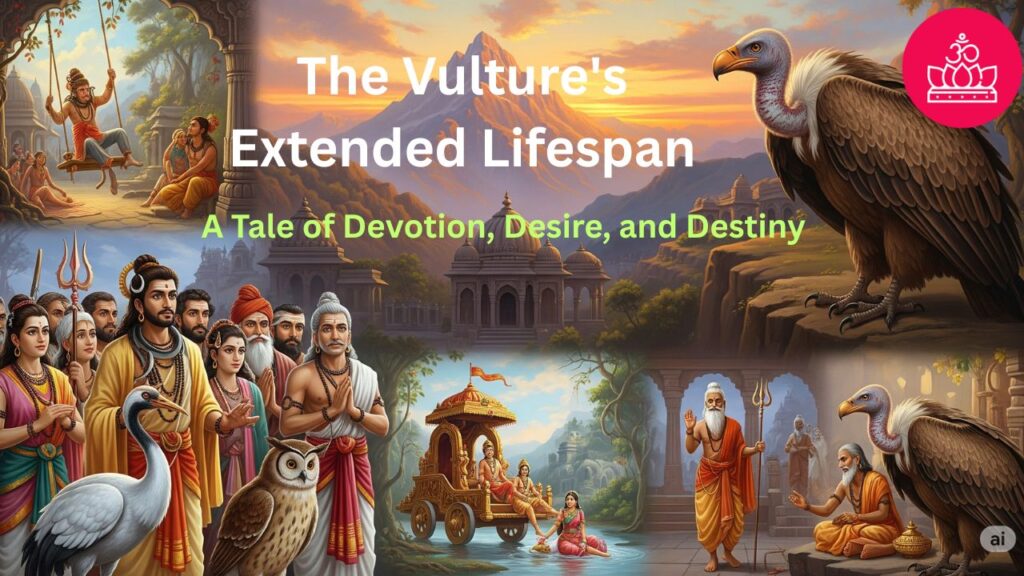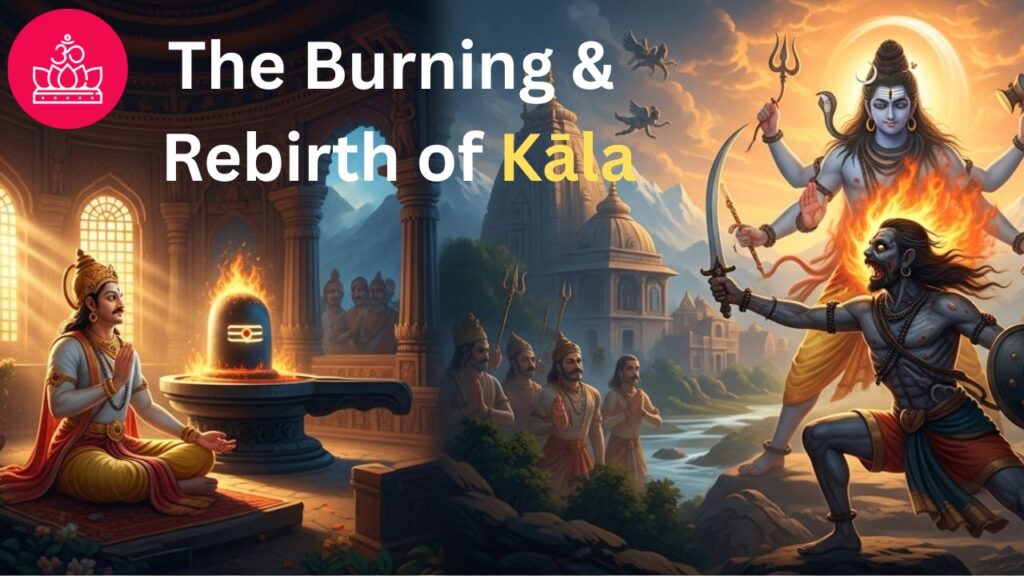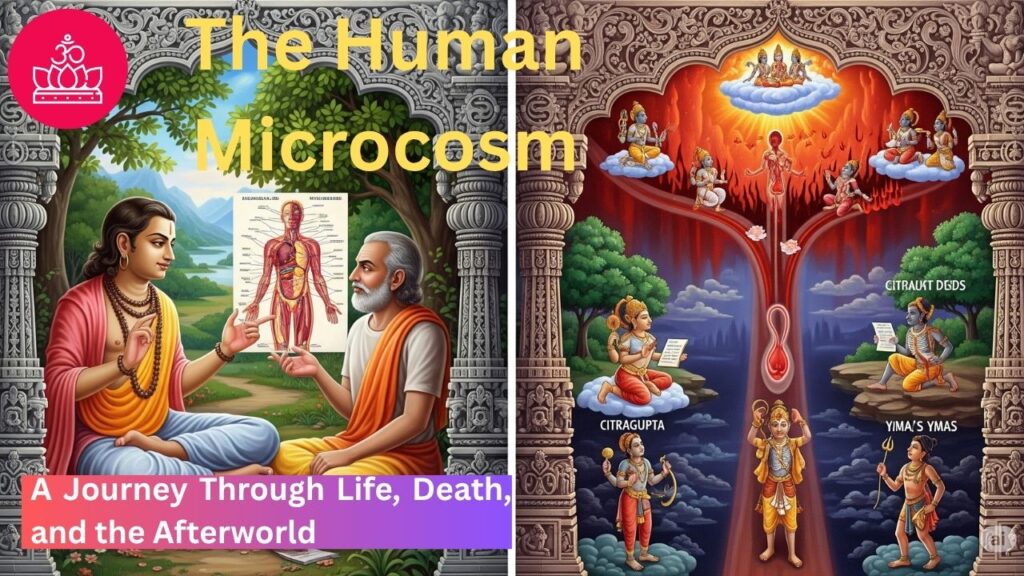The Vulture’s Extended Lifespan: A Tale of Devotion, Desire, and Destiny
As told in: Skanda Purana – Māheśvara-khaṇḍa – Kaumārikā-khaṇḍa – Chapter 9: The Vulture’s Story
This captivating narrative unfolds within the Kaumarika-khanda of the Maheshvara-khanda, a section of the voluminous Skanda Purana. It emphasizes the profound significance of worshipping Lord Shiva, particularly during the Damanaka festival, a tradition observed on the fourteenth day of the bright half of the lunar month of Caitra, involving the symbolic rocking of the deity in a swing.
# A Quest for Recognition and the Threat of Self-Immolation
The story begins amidst a poignant scene of uncertainty and despair. King Indradyumna, having forgotten his past life, remains unrecognized by those who knew him. The owl, Uluka, has just concluded his own tale, revealing his past life and the reason for his longevity. However, the central problem remains unresolved. Nāḍījaṅgha, the crane, heartbroken by the king’s continued amnesia, expresses his resolve to end his life. He argues that if Indradyumna is not recognized, the king will surely choose death, followed by the sage Mārkaṇḍeya out of grief, and then himself, bound by loyalty and friendship.
Nāḍījaṅgha’s lament highlights the dharma of friendship, the unwavering commitment to a friend’s well-being, even unto death. He condemns a life devoid of empathy, where one passively witnesses a friend’s suffering without striving to alleviate it. His words resonate with the weight of unfulfilled promises and the shame of shattered hopes.
# A Glimmer of Hope: The Ancient Vulture of Gandhamādana
Just as Nāḍījaṅgha prepares for self-imolation, Uluka intervenes. He recalls a dear friend, a vulture residing on Mount Gandhamādana, whose life spans countless ages. This ancient being, Uluka believes, might hold the key to recognizing Indradyumna. Hope flickers anew, and the group—the owl, the crane, the sage, and the amnesiac king—embark on a journey to Gandhamādana.
# A Warm Welcome and a Heartbreaking Revelation
Upon reaching the majestic mountain, they are greeted by the venerable vulture. Emerging from his nest, the aged creature welcomes them with genuine warmth and offers them hospitality, providing comfortable seats and nourishing food. After the initial courtesies, the vulture inquires about the purpose of their visit. Uluka explains the predicament, emphasizing the crane’s unwavering resolve to die if Indradyumna’s identity remains a mystery. He implores the vulture to share his knowledge, if any, about the king, thereby saving not only Indradyumna but also the lives of those bound to him by friendship and devotion.
The vulture listens intently, then delivers a heartbreaking revelation. He reveals that fifty-six kalpas – vast cosmic cycles – have passed since his birth, and he has neither seen nor heard of King Indradyumna. The king is astonished by the vulture’s immense age, and despite his distress, inquires about the secret of such a long lifespan.
# The Monkey, the Swing, and the Divine Boon
The vulture then narrates his own extraordinary tale. He begins by recounting his previous birth as a monkey. One spring, during the auspicious Damanaka festival celebrated on the fourteenth day of the bright half of Caitra, under the constellation Hasta and the Yoga Harṣaṇa, he stumbled upon a Shiva temple in the forest. Drawn by his playful nature, he climbed onto the golden swing holding the Shiva Linga and rocked it back and forth, oblivious to the sacredness of the act. When the devotees arrived in the morning, they were enraged to find a monkey desecrating the divine swing. They beat him mercilessly, and he died within the very swing of Lord Shiva.
However, this seemingly unfortunate incident became a turning point. Due to the unintentional merit earned by rocking Shiva’s swing, he was reborn as Kuśadhvaja, the prince of Kāśī. Remembering his past life, he grew into a devout king, diligently observing the Damanaka festival and promoting its significance. He underwent Shiva-Dīkṣā, a sacred initiation into the worship of Shiva, and through rigorous spiritual practices, including the restraint of mental activities, the practice of detachment (Vairāgya), and the repetition of the Udgītha Mantra, he attained a high level of spiritual realization.
Pleased by his unwavering devotion, Lord Shiva appeared before him and offered him a boon. Kuśadhvaja, filled with divine love, requested to become one of Shiva’s Ganas (attendants). Shiva granted his wish and presented him with a magnificent aerial chariot, adorned with precious stones and possessing divine capabilities.
# A Fall from Grace: The Sage’s Curse
For a time, Kuśadhvaja enjoyed his elevated status, traversing the heavens in his divine chariot. However, one fateful spring day, while seated near the window of his aerial chariot, he spotted the daughter of Sage Agniveśya bathing in a pond. Overcome by lust, he descended from his chariot and abducted her.
The young woman cried out for her father, and her friends rushed to inform the sage of the abduction. Agniveśya, enraged by this transgression, used his ascetic powers to halt the aerial chariot. He cursed Kuśadhvaja, declaring that just as he had snatched the girl like a vulture seizing its prey, he would become a vulture himself.
Kuśadhvaja, filled with remorse, begged for forgiveness. He pleaded that he had acted out of ignorance and had not harmed the sage’s daughter. Moved by his pleas, Agniveśya mitigated the curse, stating that Kuśadhvaja would be released from his vulture form once he assisted in the recognition of King Indradyumna.
# The Cycle of Karma and the Importance of Devotion
The vulture concluded his tale, revealing the karmic cycle that led to his extended lifespan. His unintentional act of devotion in his monkey birth resulted in a royal life and proximity to Shiva. However, his subsequent lapse into lust brought about the sage’s curse and his transformation into a vulture. The story underscores the importance of unwavering devotion, the consequences of unchecked desires, and the intricate workings of karma. It also sets the stage for the eventual recognition of Indradyumna, hinting at the vulture’s eventual liberation from his cursed form.
# SPECIAL NOTES
1. In this seemingly simplistic story, we still have one important learning to take away. That is — Even a great devotee of Lord Shiva upon whom he hd conferred blessings and grace, wouldn’t be protected by the Lord if he commits sins afterwards. Rules of Dharma laid down by Lord Shiva is impartial to everyone and hence he doesn’t even spare or protect his own devotees if they transgress the code of conduct and bring harm upon others. Kuśadhvaja, despite earning the close proximity of Lord Shiva as his Gana while being in the same body, he transgressed the code of Dharma and abducted a woman forcibly against her will. In several scriptures this has been called out and is termed as, ‘paradārābhimarṣaṇam’, meaning, “Misbehaviour (of al forms related to lus) with women who do not belong to oneself (in relation of wife)”, and it has been laid out as a grave sin. Therefore, we must strive to teach moral values to our children so that when they grow-up enriched in the teachings of Dharma, they become better citizens and create a safe world for everyone to surivive in an environment filled with respect and modesty.
2. This story of King Indradyumna and his associates spans across multiple chapters in the Skanda Purana where it is presented as a series of stories where each of the above characters are introduced at length and their backstory is given in detail. Here, for the sake of brevity and for simplicity, one story of the Vulture has been taken as the main plot to learn a moral lesson from his past life. Abridgements, sumamrizations, retellings — None of these can ever be a substitute to the original teachings. Our intention here will always be to inspire the audience through these work to return to original texts for gaining knowledge from the actual story.



